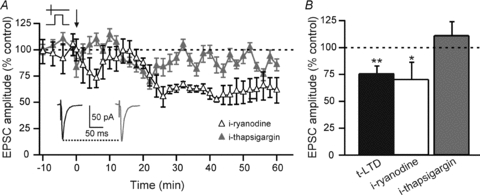Figure 5. t-LTD requires the integrity of IP3R-gated calcium stores.

A, as illustrated by representative experiments, t-LTD induced by pre–post pairings was blocked when IP3R-gated calcium stores were emptying by the use of i-thapsigargin (0.5 μm), an antagonist of the Ca2+-ATPase responsible for the calcium refilling of IP3-R-gated calcium stores. When ryanodine-sensitive internal calcium stores (CICR stores) were calcium depleted with i-ryanodine (100 μm), t-LTD could still be induced after pre–post pairings. Insets: averaged EPSCs before (black) or after (grey) STDP protocols with i-thapsigargin treatment. B, summary of the effects of i-ryanodine and i-thapsigargin treatments. t-LTD was blocked by i-thapsigargin treatment (113.8 ± 13.3%, n = 6) but not by i-ryanodine treatment (81.3 ± 9.7%, n = 7). ns: not significant, *P < 0.05, **P < 0.01.
